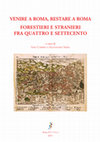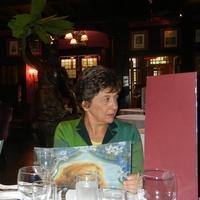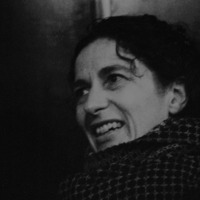San Giovanni dei Fiorentini papers by Alessandro Serra

"The Society of Mercy of the Florentine Nation in Rome. Commissions, solidarity, membership and c... more "The Society of Mercy of the Florentine Nation in Rome. Commissions, solidarity, membership and charity towards foreigners of any condition"
This essay is part of an extensive research on the church, property and places of the Florentine community in Rome. It aims to examine the relation between the Florentines and other foreign groups established in Rome, attracted by the many opportunities the Papal City offered. This Florentine social group was first organized in 1448 within a charitable brotherhood called Compagnia della Pietà or the Society of Pity. Still active today, it gathered such as other confraternities in Florence did. Members of this large Florentine community rotated actively around the confraternity and the places where they met weekly to fulfill their spiritual and social needs establishing and consolidating relations that leaded to common good, mutual help economic benefits and Florentine prestige. The Society was therefore meant to assist the sick and the poor Tuscan citizens and to defend commercial and social interests while promoting "Fiorentinità" through the exaltation of their traditions of social, political and cultural grandeur. But, how open was the Society towards foreigners who intended to be a member, to have a funeral celebrated, to access charity or to work for the Confraternity in Rome? The Company slowly succeeded in promoting and sponsor zing the construction of a National Church that reflected Florentine grandeur using the main symbol of Florence: Santa Maria del Fiore's dome in the same proportions of the cupolone. The final result was not by Florentine hands such as Antonio da Sangallo the younger nor Michelangelo Buonarroti, that among other Florentine artists were the authors of splendid projects but one by foreigners Giacomo della Porta, Carlo Maderno and Francesco Borromini. Three non Florentine architects was the response to having then the same architects of Saint Peters Basilica, the greatest construction site in Europe ever, to continue the Florentine grandeur idea without regarding nationality as it was initially.









Uploads
San Giovanni dei Fiorentini papers by Alessandro Serra
This essay is part of an extensive research on the church, property and places of the Florentine community in Rome. It aims to examine the relation between the Florentines and other foreign groups established in Rome, attracted by the many opportunities the Papal City offered. This Florentine social group was first organized in 1448 within a charitable brotherhood called Compagnia della Pietà or the Society of Pity. Still active today, it gathered such as other confraternities in Florence did. Members of this large Florentine community rotated actively around the confraternity and the places where they met weekly to fulfill their spiritual and social needs establishing and consolidating relations that leaded to common good, mutual help economic benefits and Florentine prestige. The Society was therefore meant to assist the sick and the poor Tuscan citizens and to defend commercial and social interests while promoting "Fiorentinità" through the exaltation of their traditions of social, political and cultural grandeur. But, how open was the Society towards foreigners who intended to be a member, to have a funeral celebrated, to access charity or to work for the Confraternity in Rome? The Company slowly succeeded in promoting and sponsor zing the construction of a National Church that reflected Florentine grandeur using the main symbol of Florence: Santa Maria del Fiore's dome in the same proportions of the cupolone. The final result was not by Florentine hands such as Antonio da Sangallo the younger nor Michelangelo Buonarroti, that among other Florentine artists were the authors of splendid projects but one by foreigners Giacomo della Porta, Carlo Maderno and Francesco Borromini. Three non Florentine architects was the response to having then the same architects of Saint Peters Basilica, the greatest construction site in Europe ever, to continue the Florentine grandeur idea without regarding nationality as it was initially.
This essay is part of an extensive research on the church, property and places of the Florentine community in Rome. It aims to examine the relation between the Florentines and other foreign groups established in Rome, attracted by the many opportunities the Papal City offered. This Florentine social group was first organized in 1448 within a charitable brotherhood called Compagnia della Pietà or the Society of Pity. Still active today, it gathered such as other confraternities in Florence did. Members of this large Florentine community rotated actively around the confraternity and the places where they met weekly to fulfill their spiritual and social needs establishing and consolidating relations that leaded to common good, mutual help economic benefits and Florentine prestige. The Society was therefore meant to assist the sick and the poor Tuscan citizens and to defend commercial and social interests while promoting "Fiorentinità" through the exaltation of their traditions of social, political and cultural grandeur. But, how open was the Society towards foreigners who intended to be a member, to have a funeral celebrated, to access charity or to work for the Confraternity in Rome? The Company slowly succeeded in promoting and sponsor zing the construction of a National Church that reflected Florentine grandeur using the main symbol of Florence: Santa Maria del Fiore's dome in the same proportions of the cupolone. The final result was not by Florentine hands such as Antonio da Sangallo the younger nor Michelangelo Buonarroti, that among other Florentine artists were the authors of splendid projects but one by foreigners Giacomo della Porta, Carlo Maderno and Francesco Borromini. Three non Florentine architects was the response to having then the same architects of Saint Peters Basilica, the greatest construction site in Europe ever, to continue the Florentine grandeur idea without regarding nationality as it was initially.